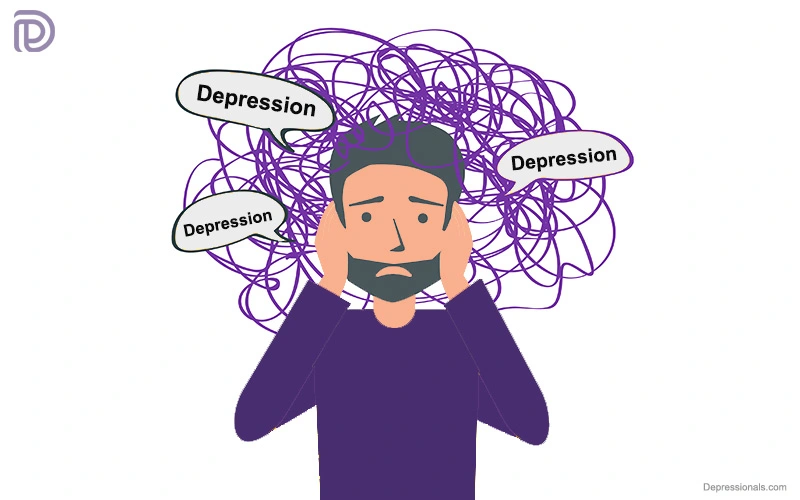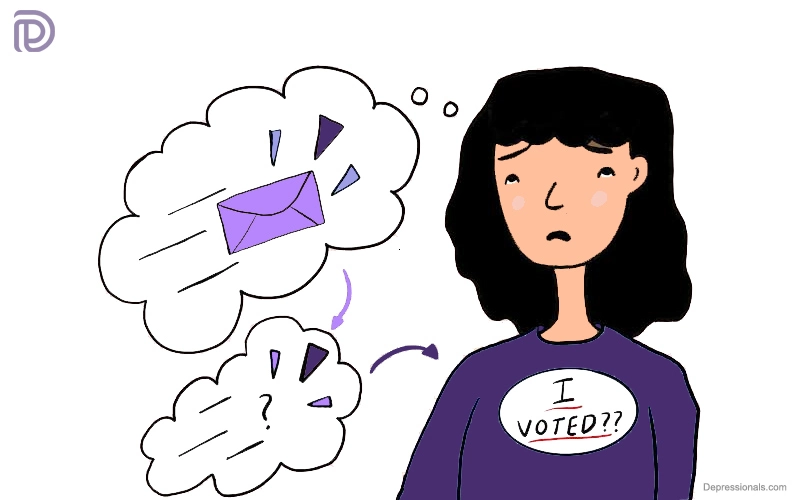Antenatal depression also called prenatal or perinatal depression, is a type of clinical depression that occurs during pregnancy and may predispose women to postpartum depression if untreated. Pregnant women may experience this condition in 7% to 20% of cases.
The effects of prenatal stress on fetal development can be detrimental to the mother and child and have adverse effects on the mother. Depressed or stressed mothers have an effect on their infants even after they are born. Their children become less active and may experience emotional distress.
Stress and worries associated with pregnancy can lead to antenatal depression, but at a much more severe level. There are other triggers such as unplanned pregnancy, difficulties becoming pregnant, abuse history, and economic or family circumstances.
Patients usually report symptoms related to how they view themselves, how they feel about going through such a life-changing event, or the restrictions that motherhood places on their lifestyle, or how their partner or family feels about the baby.
A pregnant woman’s body is under significant stress, so she can expect symptoms such as mood swings, sadness, irritability, pain and memory loss. The effects of antenatal depression on the mother and the baby are extremely severe if left untreated.
The health care provider of any mother who feels she is experiencing antenatal depression should be consulted about it. Women who have suffered from mental health issues in the past should talk to their doctors early in pregnancy to avoid possible depressive symptoms, as well.
Related: Anxiety During Pregnancy
Antenatal depression symptoms
Women are classified according to their symptoms of antenatal depression. There are many changes to mood, memory, eating habits, and sleeping habits that occur during pregnancy. The symptoms of prenatal depression become severe when they affect a woman’s daily life and begin to interfere with her pregnancy. Symptoms of antenatal depression are:
- Concentration issues
- Overwhelming anxiety and fear
- Memory problems
- Emotional numbness
- Extreme irritability
- Excessive or insufficient sleep
- Exhaustion that never ends
- Overeating or an inability to eat
- Unrelated weight loss or gain
- No interest in sexual activities
- Dreadful state of mind
- Guilt or failure feelings
- Persistent sadness
- Suicidal thoughts
Additionally, you may not be able to get excited about the pregnancy or the baby, feel disassociated with the baby, or be unable to form or feel a bond with the developing child. There is a risk that this can adversely affect the mother’s relationship with her child, as well as her ability to care for herself. In such cases, the mother may be exposed to even greater risks.
Antenatal depression may be caused by various factors, including relationship issues, family history of depression, infertility, loss of a previous pregnancy, complications during pregnancy, and trauma experienced during childhood.
Related: Postpartum Anxiety
Duration and onset of symptoms
Many factors can contribute to antenatal depression. The most common reason is fear and stress during pregnancy. There are also unintended pregnancies, hyperemesis gravidarum, financial turmoil, living arrangements, and relationships with family and friends.
Postnatal depression is typically the result of depression symptoms occurring after childbirth, which is why depression symptoms associated with pregnancy are categorized in this way. This is a list of when various women began to experience depression-related symptoms:
- 11.8 percent at 18 weeks
- 13.5 percent at 32 weeks
- 9.1 percent 8 weeks after the birth
- 8.1 percent 8 months after the birth
According to an article posted recently by The BabyCenter, the authors stated that “For years, experts mistakenly believed that pregnancy hormones protected against depression, leaving women more vulnerable to the illness only after the baby was born and their hormone levels plunged.” This could explain why antenatal depression is just now becoming more widely recognized.
Related: Postnatal Anxiety
Prevalence and causes
Globally, antenatal depression is slightly more prevalent in certain regions than in others. An estimated 16% of pregnant women in the United States experience antenatal depression, while 24% of pregnant women in South Asia do. Research shows that the number of women suffering from it is increasing.
It was once assumed that antenatal depression was simply the normal stress of pregnancy, so it was simply dismissed as an ordinary ailment. There may be many factors contributing to it, including the mother’s family, economic position, relationship status etc.
This problem is caused by hormonal changes and physical changes that occur during pregnancy. There is also a risk of an unplanned pregnancy due to the lack of social support, marital dissatisfaction, discriminatory environments at work and domestic abuse.
It has been suggested that women with low vitamin D levels are more likely to suffer from antenatal and postpartum depression. Pregnancy depression is more prevalent among women living in low-income countries who lack quality healthcare, face economic difficulties, and do not have a strong support network.
Related: Situational Depression
Antenatal depression screening
During perinatal mental health screenings, antenatal and postpartum depression can be detected and diagnosed early. An organization such as the American College of Obstetricians and Gynecologists strongly advocates universal screening as part of routine maternity care for women who are expecting or postpartum for depression.
Most states, including California, have already passed laws requiring providers to screen patients during visits since they recognize that early screenings in the treatment process can save time. A screening tool commonly used to detect depression is called the Patient Health Questionnaire 9 (PHQ-9).
According to DSM-IV, the PHQ-9 scale was developed based on 9 items that correlate to DSM-IV criteria for depression. It was developed based on DSM-IV criteria for depression. There have been comparisons between the sensitivity and specificity of the shortened version of the PHQ. The screening test is usually administered at a primary care clinic and is usually self-administered by the patient.
But simply screening at-risk patients for mental health problems is not enough. A health care system should implement interventions such as mental health monitoring and referrals to treatment in order to ensure these women receive consistent assistance throughout their recovery.
Researchers have shown that obese women are more likely to suffer mental health issues and should discuss any symptoms at their first prenatal appointment with their doctor.
Read: Depression and Divorce
Antenatal depression treatment
The treatment of antenatal depression is challenging because the treatment of the mother affects the baby as well. Antenatal depression can be treated non-pharmacologically as well as pharmacologically.
Non-pharmacological therapy
Psychotherapy
Women suffering from antenatal depression are advised to consider psychotherapy since it is an effective way for them to express their feelings. It reduces symptoms of antenatal depression specifically with Cognitive Behavioral Therapy.
It is also recommended that a psychiatrist be seen since they are able to determine if medications will be beneficial and make specific and specific suggestions for medications, if necessary. An important aspect of emotional support during antenatal depression may come from family members.
An analysis of recent systematic reviews and meta-analyses of the literature found that although mental health specialists are trained to provide counseling interventions, nonspecialized providers, such as lay counselors, nurses, midwives, and teachers with no formal training when it comes to providing depression and anxiety treatment, fill a gap.
Exercise therapy
Several studies have shown that exercising can relieve symptoms of depression before and after birth, but it does not prevent it completely.
The following exercises have been studied as being effective for reducing symptoms:
- Yoga
- Walking
- Stretching
- Aerobic exercise
Related: How to Get Out of a Depressive Episode
Medications
The healthcare provider should be forthcoming about the risks and benefits of all the medications available to treat antenatal depression when discussing medication options. It is possible to use two types of antidepressants during pregnancy: tricyclic antidepressants (TCAs) and selective serotonin reuptake inhibitors (SSRIs). Treatment of antenatal depression with anti-depressant medication is extremely effective once prescribed.
The mood of patients typically improves in roughly 2 to 3 weeks, and they may start to feel a strong connection to their baby. A number of therapeutic benefits have been reported, including increased energy, increased mood and better concentration. However, there are very few side effects to report.
Antidepressants used during pregnancy have not been associated with abnormalities in the baby so far. SSRIs may cause difficulties for the newborn to adjust to conditions after birth if the mother used them during pregnancy. Studies indicate that prenatal SSRI exposure during the second and third trimesters increases the likelihood of babies requiring intensive care after birth because of respiratory disorders, cardiac problems, low birth weight and other reasons.
In addition, the motor control of babies exposed to SSRIs during the second and third trimesters is less than those not exposed. Compared with newborns who had not been exposed to SSRIs for more than five months before birth, newborns who had been exposed to SSRIs for at least five months were at a greater risk for lower Apgar scores.
However, the long-term health of the children was not affected by prenatal SSRI exposure. There is no evidence that prenatal depression has any effect on infants in these studies.
Related: How to Overcome Depression
Antenatal depression and infant health
An increased risk of spontaneous abortion is associated with depression during pregnancy. During pregnancy, acute and chronic stress can diminish healthy immune function and lead to spontaneous abortion, according to a recent review by Frazier et al. It is still debated whether the miscarriage is caused by depression or by antidepressant medication.
Researchers in Denmark found that the incidence of miscarriage in the first trimester was higher in depressed women not exposed to SSRIs compared with non-depressed women exposed to SSRIs, suggesting that miscarriage may be related to the psychological state of the mother rather than the antidepressant itself.
Women who experience depression during pregnancy have a poorer prognosis for their babies. Women who suffer from high levels of depression during pregnancy are more likely to give birth to infants who require hospitalization. Depressed pregnant women are more likely to experience poor health among their infants, such as reduced breastfeeding, physical growth problems, low birth weight, early gestational age and diarrheal disease.
An antenatal screening given during the first or third trimester is associated with a high risk of early breastfeeding cessation. Studies have also shown that maternal depression has an extensive impact on the developing fetus that can even be seen in the adult offspring. Studies have also shown that maternal depression has an extensive impact on the developing fetus that can even be seen in the adult offspring.
There is also evidence that maternal depression can affect the developing fetus and can even affect the offspring in adulthood. The damage is more pronounced for women from lower socioeconomic backgrounds. Among women with prenatal depression, Coburn et al. found that infants with prenatal depression had significantly higher rates of health concerns at 3 months compared to those without it.
The symptoms included rash, colic, cold, fever, cough, diarrhea, ear infections and vomiting. The low birth rate and preterm births are also significant concerns for women from low-income backgrounds.
Studying the impact of confounding variables on pregnancy depression in relation to infant health concerns has been an interesting and informative area of research. Some factors which influence infant health concerns are the mother’s age, her romantic partner, her education, her household income, her immigration status, the number of other children under her care and breastfeeding.
Various factors during pregnancy may have an impact on the health of infants, even into adulthood, and the role of those factors during pregnancy should be investigated. Several studies have been conducted on postpartum depression symptoms, but those studies are relatively scarce compared to those on prenatal depression.
Read: How to Help Someone with Depression
Male perspective for antenatal depression
During an expecting partner’s pregnancy, dads are also commonly affected by depression, resulting in fatigue, changes in sleep patterns, and changes in eating habits. Women suffering from antenatal or postnatal depression are often less affectionate and intimate towards male partners because of this.
It is advisable for fathers to encourage their partners to seek medical treatment if symptoms of antenatal depression occur. However, the father should also find support for himself.
Researchers in Sweden observed 366,499 births over an 8-year period, and newly diagnosed paternal depression around the conception time or during pregnancy was associated with a preterm birth risk. Although no correlation was shown with preexisting paternal depression, this may be due to how the mother perceives the changes in her partner’s mood.






Merely wanna state that this is invaluable, Thanks for taking your time to write this.
Loving the information on this internet site, you have done great job on the posts.